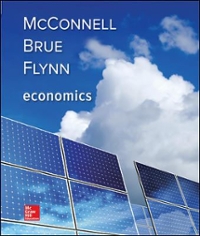Question
Suppose two firms produce a homogenous good for which there is inverse demand curve P = 101-Q, where Q = Q1+Q2. Each firm as the
Suppose two firms produce a homogenous good for which there is inverse demand curve P = 101-Q, where Q = Q1+Q2. Each firm as the total cost curve TCi = 9 + Qi + Qi 2 where i=1 or i=2. Each firm picks quantity simultaneously. That is, we have a Cournot game.
a) What is the function for average total cost for firm 1? What is the function for average variable cost?
b) Suppose firm 2 picks a quantity of Q2=20. If firm 1 picks a quantity of Q1=33, is firm 1 pricing above or below marginal cost? What about average total cost and average variable cost? Is the firm predatory pricing under the Areeda Turner rule?
c) If firm 1 sets Q1=48, what is firm 2's best response? At the resulting price, is firm 1 predatory pricing under the Areeda-Turner rule?
d) In (c), would we expect Firm 2 to exit in the short-run, the long-run or not at all?
e) What does this model say about the relationship between the Areeda-Turner definition of predatory pricing and the likelihood of an equally efficient competitor exiting?
Step by Step Solution
There are 3 Steps involved in it
Step: 1

Get Instant Access to Expert-Tailored Solutions
See step-by-step solutions with expert insights and AI powered tools for academic success
Step: 2

Step: 3

Ace Your Homework with AI
Get the answers you need in no time with our AI-driven, step-by-step assistance
Get Started


